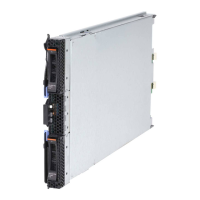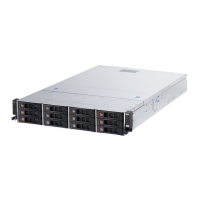Chapter 2. Architecture and technical overview 43
Optimized for servers
The POWER7 processor forms the basis of a flexible compute platform and can be offered in
a number of guises to address differing system requirements.
The POWER7 processor can be offered with a single active memory controller with four
channels for servers where higher degrees of memory parallelism are not required.
Similarly, the POWER7 processor can be offered with a variety of SMP bus capacities
appropriate to the scaling-point of particular server models.
Figure 2-5 shows the physical packaging options that are supported with POWER7
processors.
Figure 2-5 Outline of the POWER7 processor physical packaging
2.2.6 On-chip L3 cache innovation and intelligent cache
A breakthrough in material engineering and microprocessor fabrication has enabled IBM to
implement the L3 cache in eDRAM and place it on the POWER7 processor die. L3 cache is
critical to a balanced design, as is the ability to provide good signalling between the L3 cache
and other elements of the hierarchy such as the L2 cache or SMP interconnect.
The on-chip L3 cache is organized into separate areas with differing latency characteristics.
Each processor core is associated with a Fast Local Region of L3 cache (FLR-L3) but also
has access to other L3 cache regions as shared L3 cache. Additionally, each core can
negotiate to use the FLR-L3 cache associated with another core, depending on reference
patterns. Data can also be cloned to be stored in more than one core's FLR-L3 cache, again
depending on reference patterns. This
intelligent cache management enables the POWER7
processor to optimize the access to L3 cache lines and minimize overall cache latencies.
